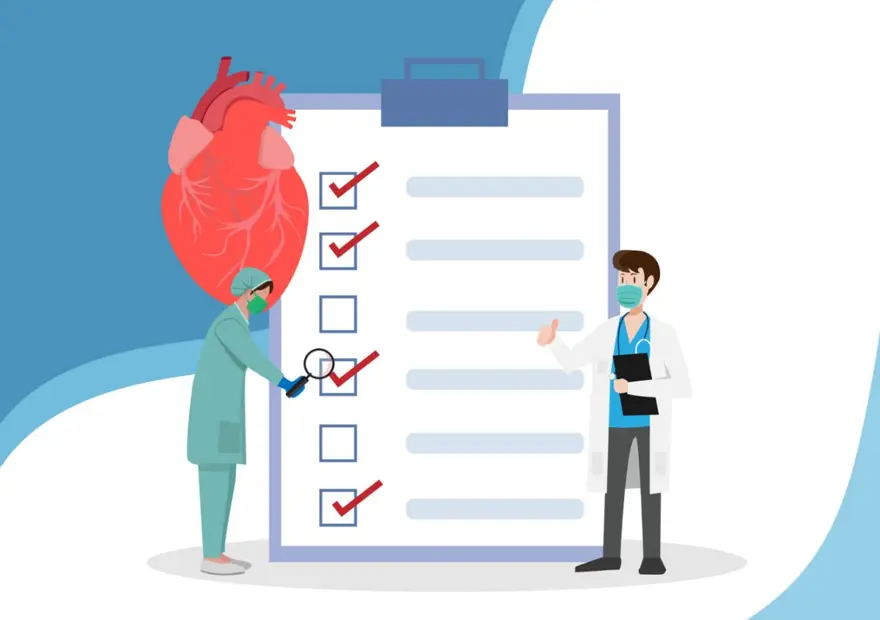Preventive Healthcare
Gas Gangrene: A Fast-Spreading Infection Requiring Urgent Care
136 Views
0

What is gas gangrene?
Gas gangrene, or clostridial myonecrosis, is a potentially lethal bacterial infection that targets muscle tissue. It is characterised by the production of gas within the infected tissues, leading to tissue death and severe complications.
Gas gangrene causes can be mainly attributed to the anaerobic bacteria Clostridium perfringens, although other bacteria such as group A streptococcus, Staphylococcus aureus, and Vibrio vulnificus can also be responsible. Immediate medical intervention is essential to prevent the infection from spreading and causing systemic complications.
How common is gas gangrene?
Despite its severity, gas gangrene is relatively rare. In the United States, approximately 1,000 cases are reported annually. However, due to its potentially lethal nature, it is crucial to be aware of the signs and seek immediate medical care if gas gangrene is suspected.
What's the difference between gas gangrene and necrotizing fasciitis?
While both gas gangrene and necrotizing fasciitis are severe bacterial infections that cause tissue death, they differ in their primary locations and causative agents:
- Gas gangrene primarily affects muscle tissue, while necrotizing fasciitis affects the fascia surrounding the muscles.
- The most common cause of gas gangrene is Clostridium perfringens, whereas necrotizing fasciitis can be caused by various bacteria.
- Necrotizing fasciitis involves the infection of the fascia, the tissue surrounding muscles, and can be caused by various bacteria, including group A streptococcus and mixed anaerobic and aerobic bacteria.
- Gas gangrene typically progresses more rapidly and produces distinctive gas in the tissues.
What are the symptoms of gas gangrene?
Recognising gas gangrene symptoms is essential for seeking immediate medical attention. Watch out for:
- Severe pain in the affected area
- Rapidly worsening swelling
- Skin colour changes from pale to red, bronze, or blackish-green
- Blisters filled with brown-red fluid
- Foul-smelling discharge
- Increased heart rate and fever
- Sweating and possible jaundice
- Crackly sensation (crepitus) under the skin due to gas production
What does gas gangrene look like?
The appearance of gas gangrene changes quickly as the infection progresses. Initially, the affected area may appear pale and swollen. However, the skin rapidly becomes discoloured, turning brownish-red and eventually dark red or purple. Large blisters filled with brown-red fluid may form, and the skin may appear bubbly due to gas production. In advanced stages, the area may show signs of necrosis, with black lesions and a distinct crepitus when pressed.
What does gas gangrene smell like?
A hallmark of gas gangrene is the presence of a foul, sweet odour emanating from the skin lesions. This distinctive smell is caused by the toxins and gases produced by the infecting bacteria as they destroy the tissue.
What causes gas gangrene?
One of the primary gas gangrene causes is the anaerobic bacteria Clostridium perfringens. As the bacteria grow within the body, they produce harmful toxins and gases that damage tissues, cells, and blood vessels. These toxins rapidly spread the infection, leading to tissue death and the formation of gas pockets. Other bacteria, such as group A streptococcus, Staphylococcus aureus, and Vibrio vulnificus, can also cause gas gangrene, although less frequently. The bacteria typically enter the body through deep, contaminated wounds or during certain surgical procedures, creating an environment conducive to their growth and toxin production. If left untreated, gas gangrene can lead to shock, kidney failure, coma, and death.
How do you get gas gangrene?
Gas gangrene typically develops after traumatic injuries or surgical procedures, especially those involving deep and contaminated wounds. High-risk injuries include:
- Deep and severe wounds
- Wounds involving muscle tissue
- Wounds contaminated with dirt, decaying vegetable matter, or stool
Surgical procedures on the large intestine (colon) or gallbladder also pose a higher risk of developing gas gangrene. In rare cases, gas gangrene can occur without any apparent injury, particularly in individuals with underlying conditions such as:
- Colon cancer
- Diverticulitis
- Disorders that reduce blood flow to the intestine
It's important to seek immediate medical attention for any deep or contaminated wounds, as prompt treatment is crucial in preventing the development and spread of gas gangrene. If you have recently undergone a high-risk surgical procedure or have an underlying condition that increases your susceptibility, be vigilant for signs or gas gangrene symptoms and contact your healthcare provider if you have any concerns.
What are the risk factors for gas gangrene?
Several factors can raise the risk of developing gas gangrene. These include blood vessel diseases such as atherosclerosis, which restrict blood flow and create an environment for anaerobic bacteria to thrive. Diabetes also increases susceptibility due to poor blood circulation and slower healing rates. Other risk factors include having colon cancer, recent traumatic injuries, deep or contaminated wounds, and specific surgical procedures, particularly those involving the large intestine or gallbladder, where infection risks are heightened.
What are the complications of gas gangrene?
If left untreated, gas gangrene can lead to severe complications, such as:
- Shock with decreased blood pressure (hypotension)
- Kidney failure
- Coma
- Death
- Permanent tissue damage that may be disfiguring or disabling
- Jaundice with liver damage
- Sepsis (spread of infection throughout the body)
How is gas gangrene diagnosed?
Prompt diagnosis is crucial for initiating timely gas gangrene treatment. Your healthcare provider will consider your clinical presentation and may order various diagnostic tests:
- Physical exam to check for signs of shock and crepitus (crackling sound) in the affected area
- Biopsy of the affected tissue
- Cultures of fluids from the infected area
- Imaging tests (MRI or X-rays) to visualize necrotized tissues and air pockets
- Microscopy or Gram stain to identify the causative bacteria
What tests will be done to diagnose gas gangrene?
To diagnose gas gangrene, your healthcare provider may order the following tests:
- X-rays or CT scans: These imaging tests can detect the presence of gas in the affected tissues, a hallmark sign of gas gangrene.
- Blood tests: Blood samples may be analysed to identify the presence of bacteria and assess the function of vital organs, such as the kidneys and liver.
- Wound cultures: A sample of the infected tissue or fluid may be collected and cultured in a laboratory to determine the specific type of bacteria causing the infection.
- Tissue biopsy: In some cases, a small sample of the affected tissue may be removed and examined under a microscope to confirm the diagnosis and rule out other conditions with similar symptoms.
How is gas gangrene treated?
Early and aggressive treatment is essential for managing gas gangrene and preventing life-threatening complications. The primary goals of gas gangrene treatment are to:
- Remove dead tissue
- Stop the infection from spreading
- Provide supportive care
Medications and procedures used to treat gas gangrene
Gas gangrene treatment typically involves a combination of medications and surgical procedures. The specific approach depends on the severity of the infection and the patient's overall health.
Medications used to treat gas gangrene include:
- Intravenous antibiotics: High doses of antibiotics are administered to fight the bacterial infection.
- Pain medications: Patients may receive pain relief medications to manage discomfort associated with the infection and surgical procedures.
Surgical procedures used to treat gas gangrene include:
- Debridement: This involves removing dead, infected tissue to prevent the spread of the infection and promote healing.
- Amputation: In severe cases, amputation of the affected limb may be necessary to prevent the spread of the infection to other parts of the body and save the patient's life.
- Fasciotomy: This procedure involves cutting the fascia, the connective tissue surrounding muscles, to relieve pressure and improve blood flow to the affected area.
In addition to medications and surgical procedures, patients with gas gangrene may also undergo hyperbaric oxygen therapy to help slow bacterial growth and promote healing.
Can gas gangrene be prevented?
Gas gangrene prevention largely depends on maintaining proper wound care and hygiene. Here are some essential tips:
- Thoroughly clean any skin injury, as this reduces the risk of bacterial contamination that could lead to infection.
- Regularly monitor wounds for signs of infection, such as redness, pain, or swelling, and address any concerns promptly.
- If you have diabetes, circulatory issues, or a weakened immune system, be particularly vigilant about wound care, as these conditions increase infection risk.
- Avoid using dirty needles for any injections, especially into muscles, to prevent bacterial introduction.
- Seek immediate medical attention for deep or contaminated wounds, as timely care is crucial for preventing complications.
Individuals with compromised blood flow or immune function are at higher risk and should take added precautions.
What can we expect if we have gas gangrene?
If you develop gas gangrene, you may experience:
- Severe pain and swelling in the affected area
- Skin discolouration, from pale to bronze to blackish-green
- Blisters with foul-smelling discharge
- Crackly sensation under the skin due to gas bubbles
- Fever, rapid heart rate, sweating, and anxiety
The infection progresses rapidly, so it's crucial to recognise gas gangrene symptoms and seek immediate medical care.
What's the outlook for gas gangrene?
The prognosis for gas gangrene depends on the speed and effectiveness of treatment. Without prompt care, the infection can cause:
- Permanent tissue damage
- Kidney failure
- Shock
- Widespread infection
- Coma
- Death
However, early diagnosis and aggressive treatment, including antibiotics, surgical removal of dead tissue, and hyperbaric oxygen therapy, can significantly improve outcomes. The sooner treatment begins, the better the chances of recovery.
Can you survive gas gangrene?
Despite medical advances, gas gangrene remains a serious condition with a risk of complications and death, especially if treatment is delayed. Prompt care is essential for improving survival rates.
When to see a doctor?
Gas gangrene is a medical emergency. Seek immediate help if you notice:
- Severe, persistent pain near a wound
- Fever and chills
- Skin discolouration, swelling, or blisters
- Foul-smelling wound discharge
- Crackly sensation under the skin
- Sudden pain after surgery or trauma
Conclusion
At Metropolis Healthcare, we understand the importance of early detection and prompt treatment in managing serious infections like gas gangrene. Our team of experienced phlebotomists provides convenient at-home sample collection for various blood tests that can help diagnose and monitor the condition. With our state-of-the-art diagnostic labs and commitment to delivering reliable results, we strive to empower you to make informed decisions about your health.












1701259759.webp)









 WhatsApp
WhatsApp